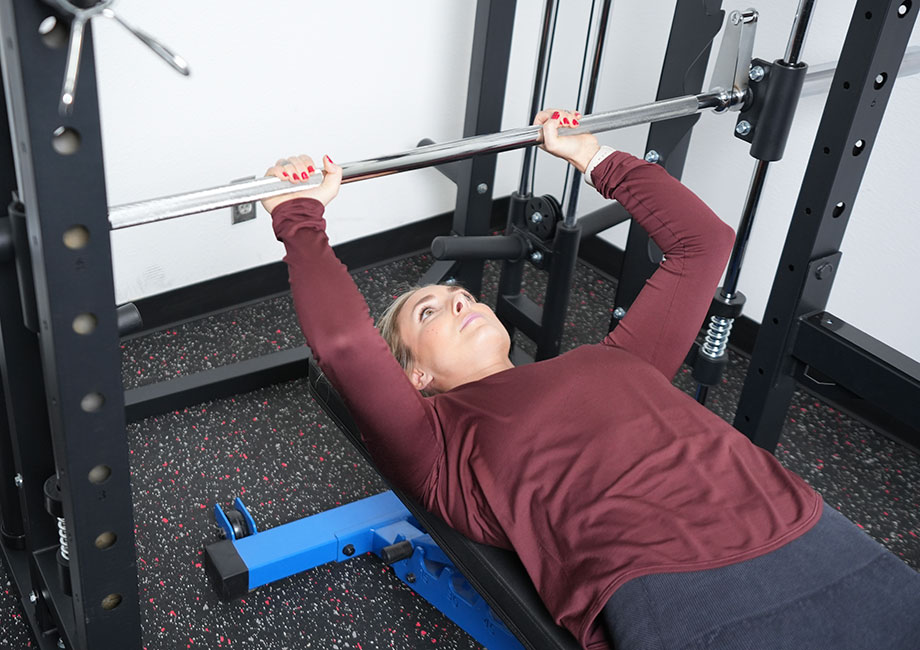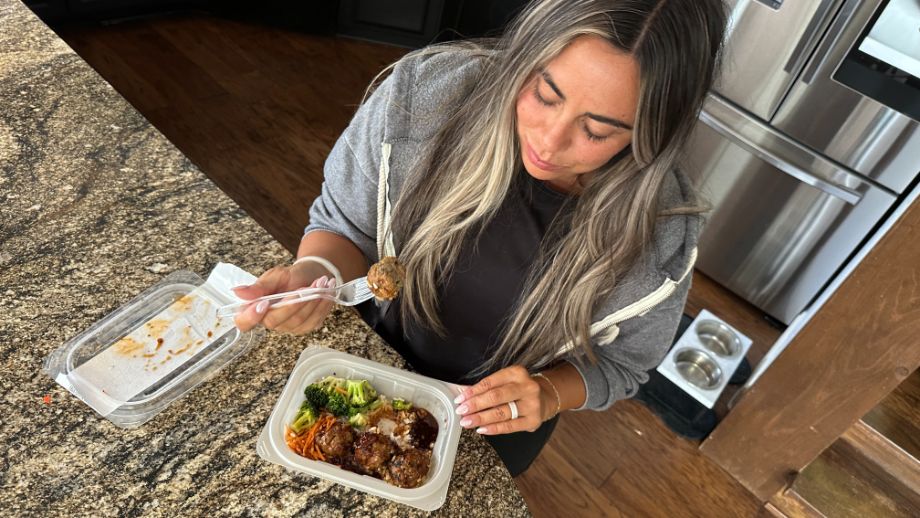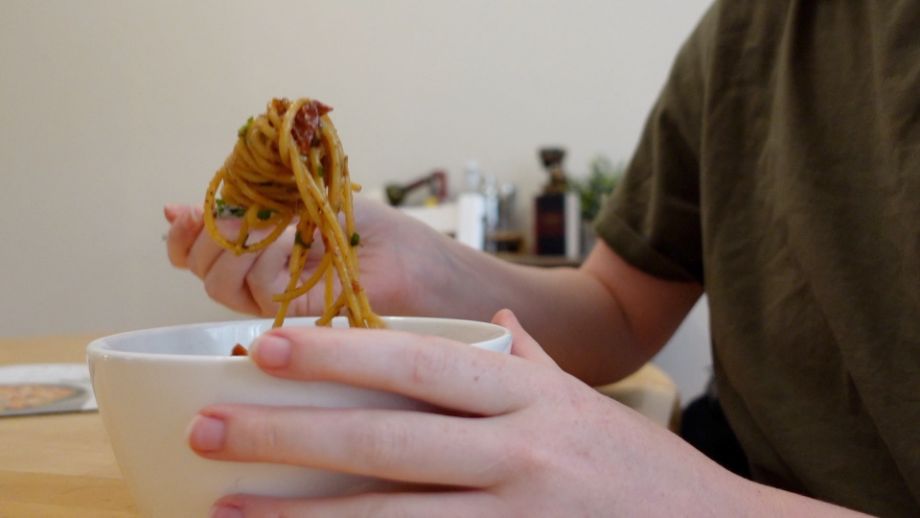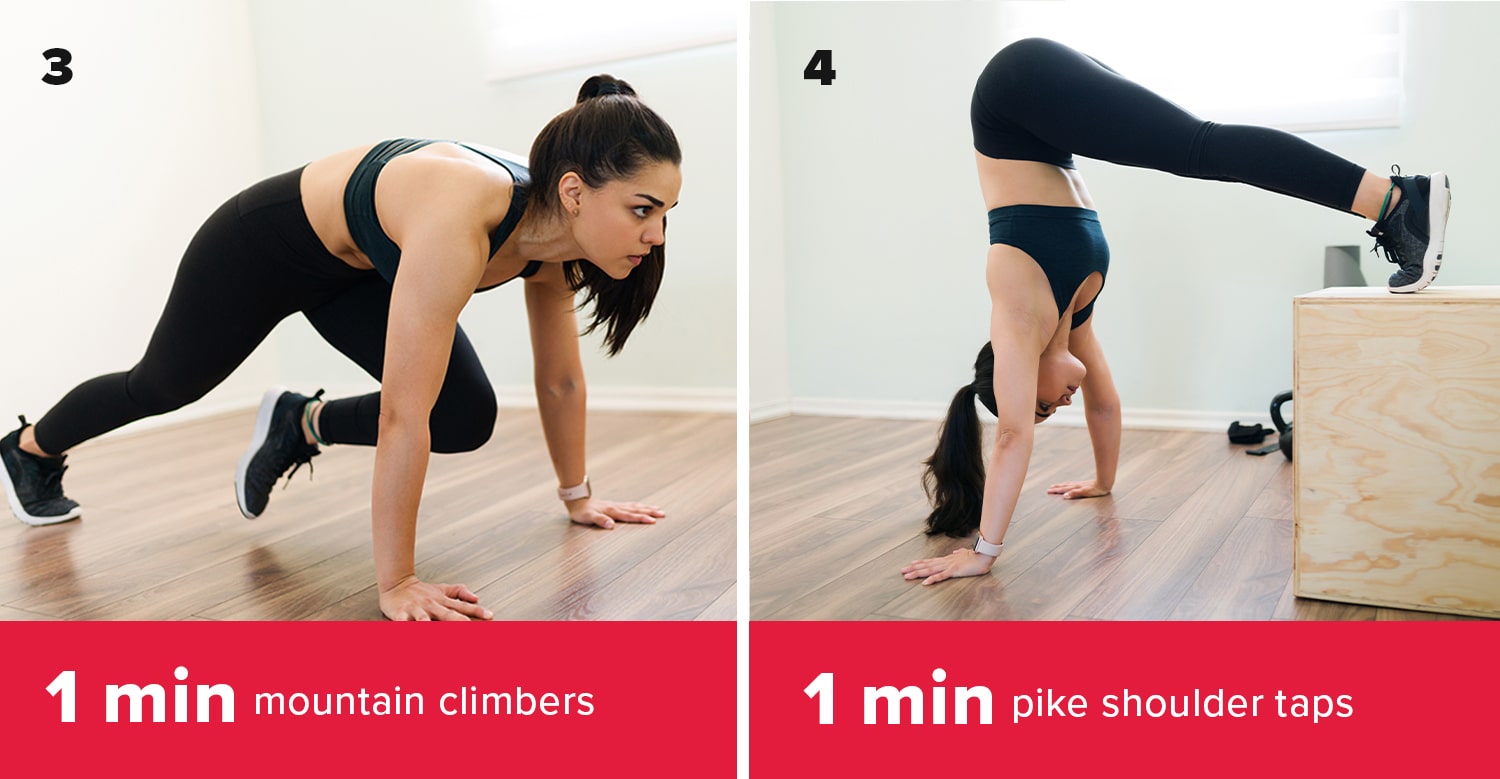Bodybuilders brag about big biceps, but true fitness enthusiasts know not to underestimate the value of strong triceps. Triceps anatomically make up more than half of the arm. Plus, they play a crucial role in pushing movements, which are beneficial in sports, exercise, and everyday life.
Many great triceps exercises can activate this all-important muscle, but we’re here to talk about the underrated but highly effective JM press. Created by powerlifting legend JM Blakley, this lift combines elements of the close-grip bench press and the skull crusher to get maximum muscle activation and help you build unparalleled pressing power.
Kate Meier, NASM-CPT, USAW-L1, CF-L1, and GGR head of content, breaks down this underrated gem of a triceps exercise, including how to do it, how to program it, and more!
How to Do the Barbell JM Press
Muscles worked: Triceps, deltoids, pectorals
How to do it:
- Set up your pressing station and lie back on the bench with the barbell racked behind your head.
- Grip the bar with an overhand grip, unrack it, and position it over your forehead.
- Slowly bend your elbows, keeping them pointed towards your feet, to lower the bar.
- Continue until your forearms and biceps touch, then squeeze the contraction.
- Press the bar back to the starting position, keeping your upper arms stationary.
- Repeat for reps then reset the barbell.
RELATED: Best Weight Bench
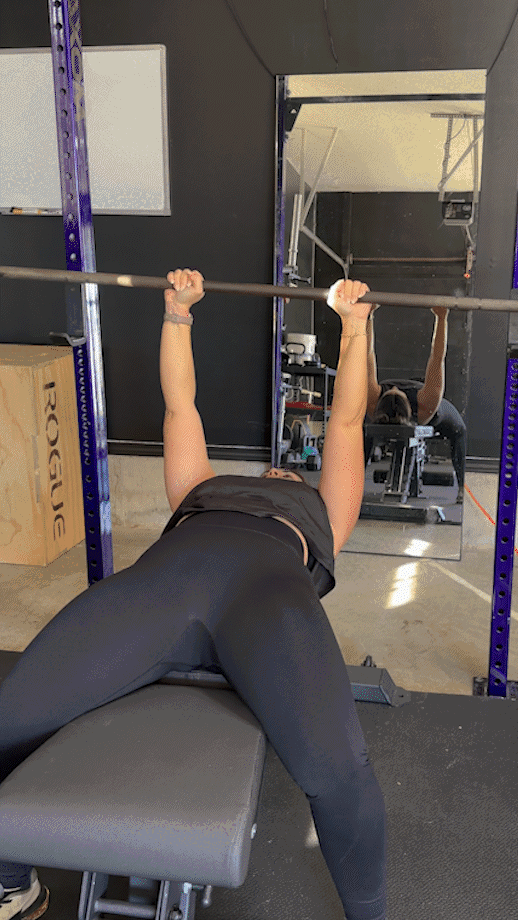
Trainer Tips for Form
The JM press is not as widely performed as the bench press or skull crusher, meaning it may take extra practice to perfect your form. Here are some expert tips to help along the way.
It Starts With the Set-Up
The wrong set-up could have you doomed from the jump. While the JM press bears many similarities to your standard bench press set-up, there are a few distinguishing features that separate the two:
- Your position: The JM press has you begin with the bar behind your head. That way, you don’t wind up smacking the J-hooks on every rep.
- Bar position: The bar’s starting position is different, too. Instead of holding the bar over your chest, it’s positioned above your forehead.
- Grip type: Seasoned lifters may go thumbless on the bench or JM press. For safety, we advocate using a full-on overhand grip with your thumb wrapped for more control.
- Grip width: Your hands should be roughly shoulder-width apart, but a little inside works as well.
On the other hand, some of your starting elements will be identical to the bench. Keep your upper back and shoulders pressed into the bench, your core tight, and your feet flat on the floor.
Watch Your Elbows
Elbow flare is a telltale sign of bad biomechanics during the bench press. The same is true of the JM press, but it’s even more important since the triceps, which are wholly responsible for elbow flexion and extension, are the primary mover.
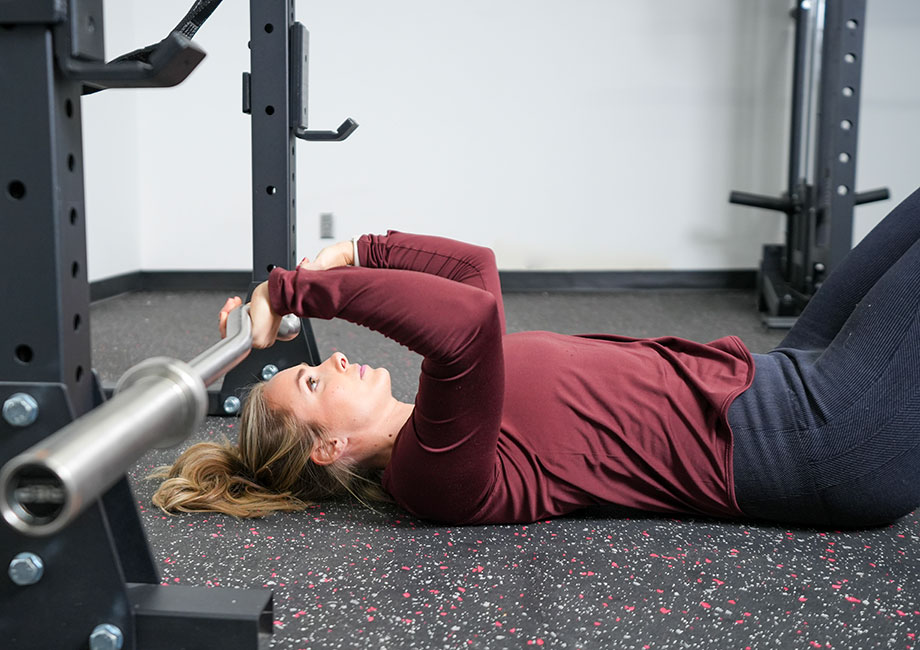
“Keep your elbows stationary, in front of the bar, and pointed forward for the whole exercise,” says Kate Meier, NASM-CPT, USAW-L1, CF-L1. “The idea is to flex the elbow to move the bar during the concentric phase, then extend it to lockout in the eccentric phase exclusively using the triceps.”
Keep Your Wrists Strong
Beginners and novice lifters tend to extend their wrists during the bench press and similar lifts like the JM press instead of holding a strong locked position, which can place stress on the wrist joint, contributing to or leading to an injury.
“You want neutral, stable wrists that remain vertically stacked over the elbow joint,” says Kate. “That’s tricky to maintain as you head into the eccentric phase, so you may need to actively flex the wrists to maintain that strong posture.”
Safety First
We here at GGR always advocate for safety first, including making good use of the built-in safety features on your squat or power rack, gradually pushing your limits, and using a good spotter whenever you can.
The JM press requires you to hold a heavy barbell over your face, which can be dangerous. For this reason, we advise going very light at first, working with a certified personal trainer, or having a spotter available to make sure you don’t literally crush your skull during this skull crusher-like movement.
RELATED: The Complete Guide to Barbell Safety
What are the Benefits of the JM Press?
JM Blakely used his signature move to become one of the best powerlifters during his prime, so what should you realistically expect from adding the JM press to your strength training regimen?
Increased Triceps Size and Strength
Sure, the JM press pulls from the delts and pecs to assist the movement, but the triceps are the main attraction, bearing the brunt of this beast of a barbell exercise. As long as your triceps still have gas in the tank, you can keep the JM press reps coming, even if your chest and shoulders are totally torched.
According to Frontiers in Sports and Active Living1, the narrow grip employed during the JM press may be what’s responsible for that ample triceps muscle activation, helping you make great gains in your strength and hypertrophy using this movement.
Improved Bench Press
The barbell bench press relies on powerful chest and triceps muscles. So, a specialized lift like the JM press is a great way to focus on building triceps strength, which will directly translate to improved power during the bench press during the lockout phase.
RELATED: What Muscles Does The Bench Press Work?
Those who are super into weightlifting will be stoked to hear that, but what about the rest of us?
Strong triceps means powerful elbow flexion and extension, so everyday activities like opening doors, pushing heavy objects, and lifting yourself out of a chair become easier to accomplish.
Less Shoulder Stress
It’s important to be mindful of where your shoulders are positioned during horizontal pressing movements, as improper technique could increase the amount of stress on the shoulder joint.
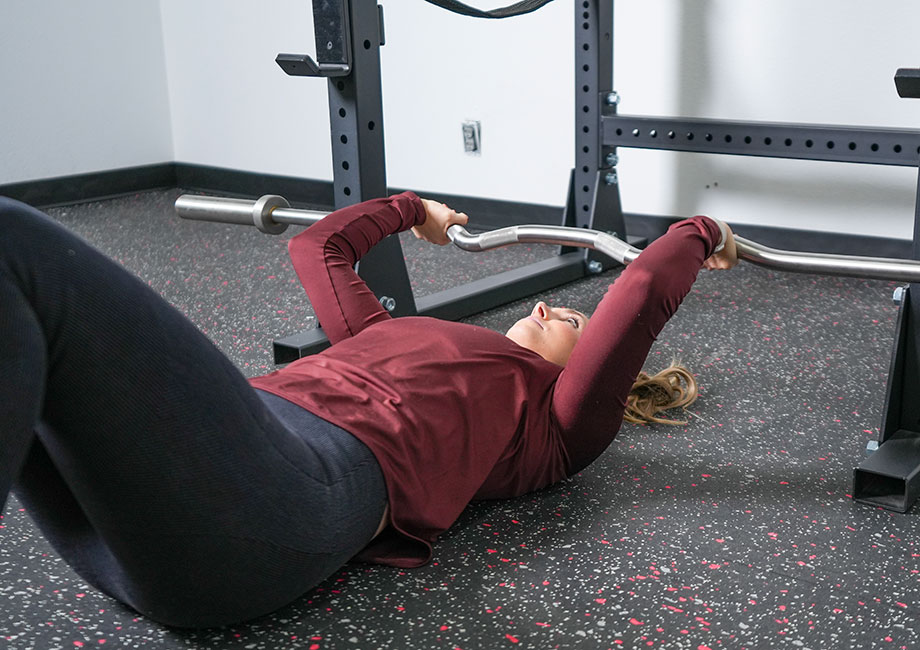
The JM press keeps your shoulders stationary, relying on the elbow flexion and extension to move the weight using your triceps strength. That means you get all the benefits of the best triceps-strengthening exercises without overtaxing that delicate shoulder joint. Classic win-win!
RELATED: Best Shoulder Exercises
Common JM Press Mistakes
It wouldn’t matter if JM Blakley himself gave you the tutorial for his signature move; everyone makes mistakes. Here are a few of the most common ones to avoid when doing JM presses.
Too Much Pressing or Skull-Crushing
Too much skull-crushing sounds like something you might do in a video game, right? It may be positive for the Call of Duty players among us, but it’s not so good during the JM press.
“The JM press is designed to find the midpoint between the bench press and skull crusher, so anything too far in either direction will convert the exercise into something else,” says Kate Meier, NASM-CPT, USAW-L1, CF-L1. “Your forearm positioning is critical for ensuring you keep the activation in the triceps.”
Aim to keep your forearms parallel to the floor. Initiating the movement from this position using only the elbow joint and triceps should ensure you keep your JM press as true to form as possible and get the activation where it should be.
Going Too Heavy
We respect beginners and novice lifters who err on the side of caution because their trepidation may help keep them safe. It’s usually the ego of a seasoned lifter that can cause them to underestimate the loading demands of a new lift and bite off more than they can chew.
At best, going too heavy on the JM press will cause you to compensate and compromise the perfect positioning you’ve worked so hard to learn in the first place. At worst, you may fumble the bar and suffer a catastrophic injury.
Play it smart, scale gradually, and work with a spotter when you push for a PR. It’s not only the best way to protect yourself, but you wind up with a buddy to celebrate your “W” with, too!
JM Press Variations
So, you’ve mastered the JM press and you’re hungry for a few variations to flesh out your workout routine. Sprinkle some of these in to spice up your strength training!
EZ-Bar JM Press
Why do it: The JM press asks a lot of your elbows and wrists. Using one of the best curl bars offers some reprieve by allowing a more neutral wrist positioning.
How to do it:
- Set up as you would for the regular JM press, but substitute your barbell for an EZ (or curl) bar.
- Unrack the bar and position it over your forehead.
- Slowly bend your elbows to lower the bar until your forearms and biceps touch.
- Pause briefly, then press the bar back to the starting position.
- Repeat for reps then reset the barbell.
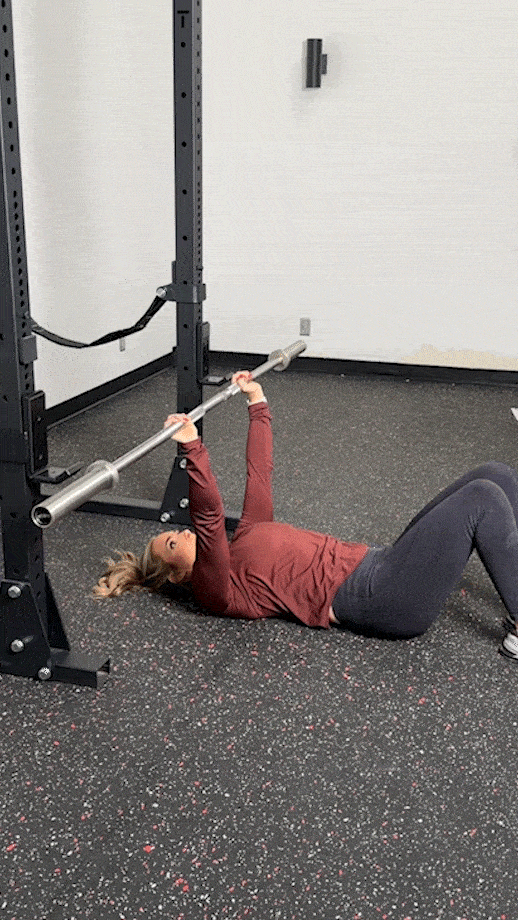
JM Floor Press
Why do it: “The JM floor press holds a few advantages over the standard version,” says Kate Meier, NASM-CPT, USAW-L1, CF-L1. “Since the floor restricts your movement, you can lift heavier, engage the triceps more, and essentially guarantee your shoulders stay in the right place from start to finish.”
How to do it:
- Set up your barbell and rack so you may lie down and unrack it from the floor.
- Position the bar over your forehead as you would for the standard JM press.
- Slowly bend your elbows to lower the bar until your forearms and biceps touch.
- Pause briefly, then press the bar back to the starting position.
- Repeat for reps.
RELATED: Floor Press Exercise
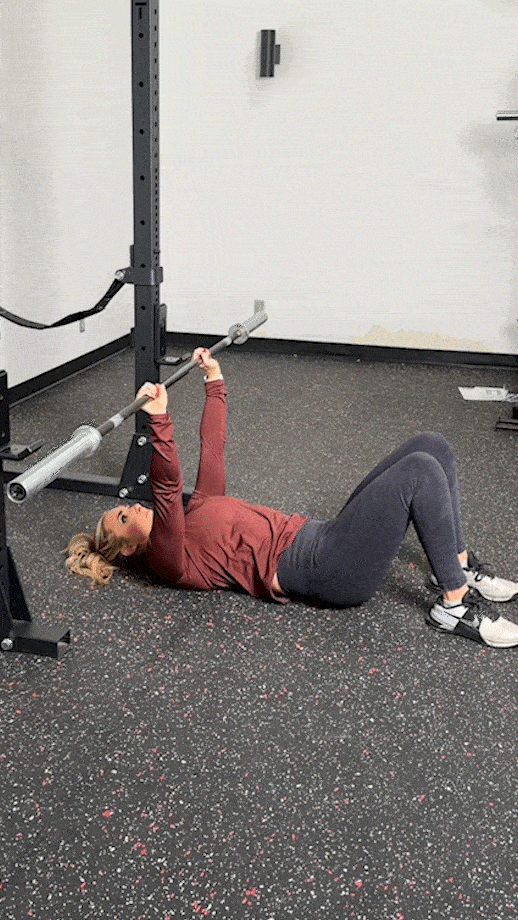
Smith Machine JM Press
Why do it: Many lifts, the JM press included, require a straight bar path. The Smith machine—a fixed barbell on a vertical track—makes it virtually impossible to deviate from that ideal bar path, so it’s a valuable tool for isolating your triceps by optimizing the movement pattern.
How to do it:
- Adjust your Smith machine so that you are able to unrack the barbell over your forehead.
- Slowly bend your elbows to lower the bar until your forearms and biceps touch.
- Pause briefly, then press the bar back to the starting position.
- Repeat for reps.
RELATED: Smith Machine Workouts
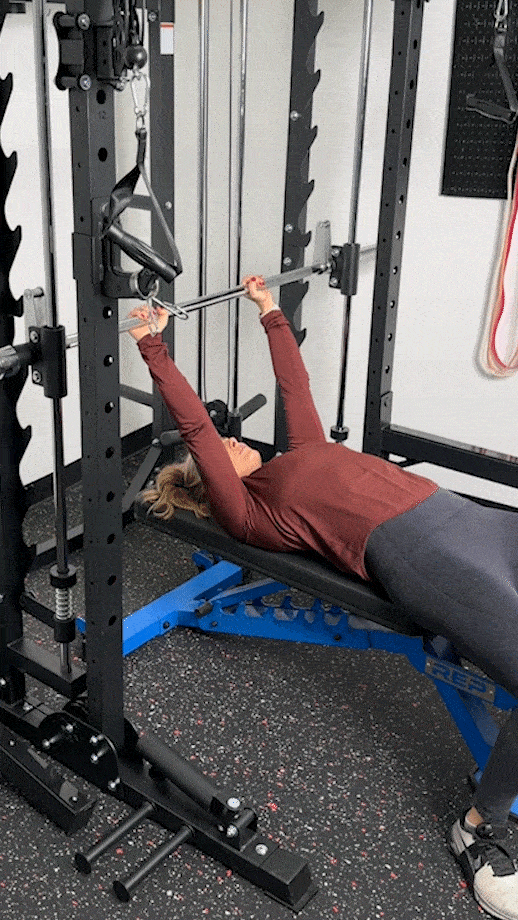
Close-Grip Bench Press
Why do it: The bench press is one of the best exercises for your chest and triceps workout split. According to the International Journal of Environmental Research and Public Health2, a more narrow grip increases triceps activation, making it a great substitute for the JM press in a pinch.
How to do it:
- Set up your bench press station, lie down, and grip the barbell with a narrow grip, or grip that’s slightly inside shoulder-width.
- Take a deep breath and exhale as you unrack the bar and position it over your chest.
- Slowly bend your elbows to bring the bar to your chest, lightly touching at the bottom.
- Exhale and press the bar away from you, contracting the chest and triceps at the top.
- Reset and repeat for reps.
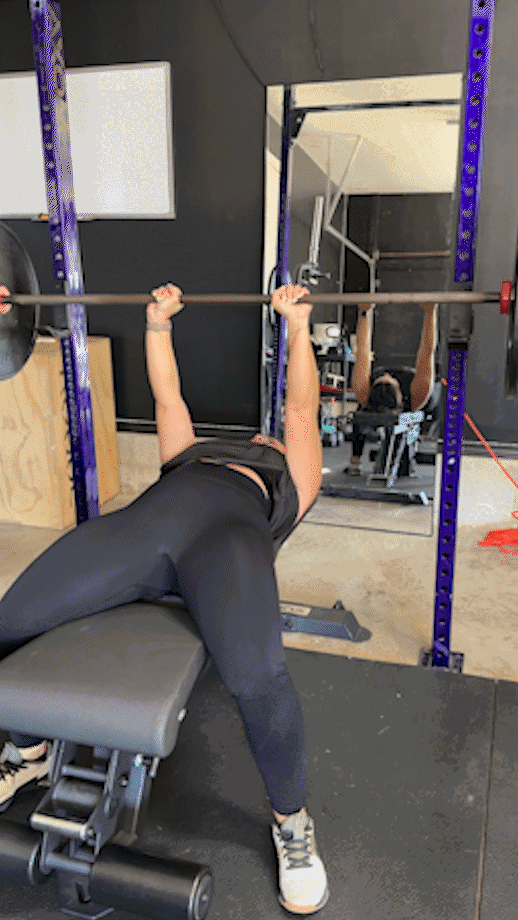
Dumbbell Skull Crusher
Why do it: Barbell skull crushers make a good addition to any comprehensive dumbbell triceps workout, but subbing in a pair of the best dumbbells allows you to get a neutral grip, alleviating some tension on the wrist, and increase the range of motion for increased muscle activation.
How to do it:
- Lie flat on a bench with a dumbbell in each hand held above your face.
- Slowly lower the weights toward your face until they are roughly next to your ears.
- Reverse the movement to return the weights to the starting position.
- Repeat for reps.
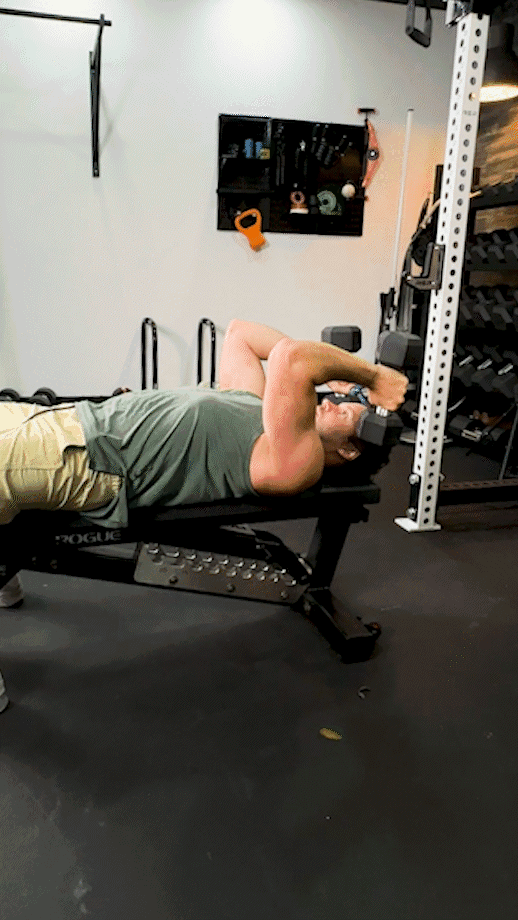
How to Program the JM Press
The JM press fits nicely in a chest and triceps split, but including it during a shoulders workout, arms workout, or full-body workout can be beneficial as well.
“I usually program the JM press towards the beginning of the workout but not necessarily first,” says Kate Meier, NASM-CPT, USAW-L1, CF-L1. “Start with a big strength movement like the regular, incline, or decline bench press, then hit the JM press after your triceps and elbows are nice and warmed up.”
- For strength: Perform 2-6 sets of 1-5 reps using heavy weight
- For hypertrophy: Perform 3-6 sets of 6-12 reps using moderate weight
- For endurance: Perform 2-3 sets of 12-20 reps using light weight or no weight
Keep in mind that “using heavy weight” for the JM press is not the same as the heavy weights you use for your regular bench press. You’re bound to lift lighter on the JM press because of the complete triceps isolation you’re getting, so factor that in.
RELATED: How Many Reps to Build Muscle
Who Should Do the JM Press?
There’s no reason pro athletes and lifters should enjoy all the gains you can get from this epic triceps-building exercise. So, everyone and anyone can benefit from the JM press.
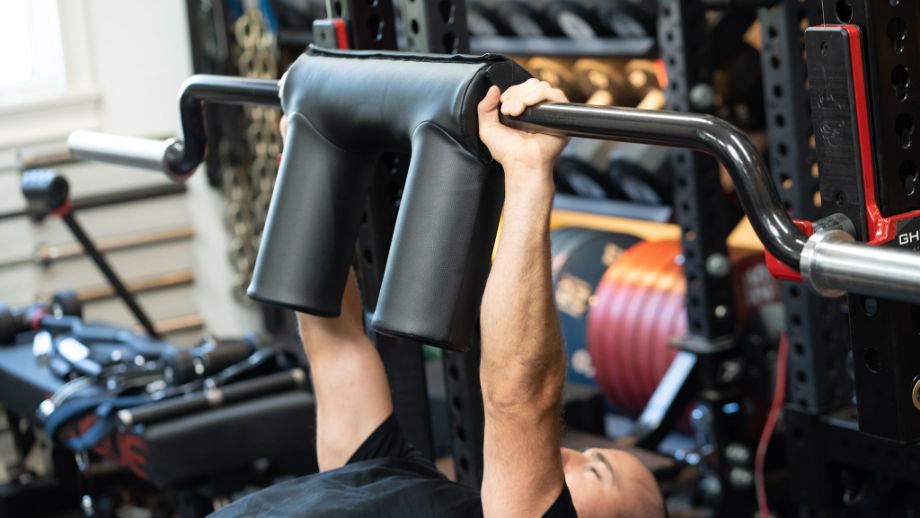
That said, strength athletes, including competitive weightlifters, bodybuilders, powerlifters, and strongman contestants, will love incorporating the JM press for some much-needed exercise diversity and an excellent tool for breaking bench press plateaus.
Everyday folks will get some value from the JM press, as it provides a little more oomph to your workout than standard triceps exercises like triceps extensions and pushdowns.
JM Press: FAQs
Is the JM press a skull crusher?
The JM press is very similar to the skull crusher, or lying triceps extension, but the movement pattern is actually unique to itself. It combines elements of the skull crusher and the close-grip bench press for a hybrid exercise that wreaks havoc on the triceps.
RELATED: Powerlifting Workout
How heavy is the JM press?
Bodybuilders and powerlifters may be accustomed to racking plate after plate for their bench press, but the JM press relies more heavily on the triceps, meaning you’ll likely lift less weight.
We recommend starting light when first finding out what you can lift on the JM press.
Is the JM press good for elbows?
“The JM press places loads of tension on your triceps and elbow joints,” says GGR Head of Content Kate Meier, NASM-CPT, USAW-L1, CF-L1. “That’s why it’s crucial to load progressively and maintain proper positioning throughout the full range of motion. Lifting too much weight and flaring the elbows will only contribute to new injuries or exacerbate existing ones.”
So, the JM press can be tough on the elbows, but if you’re exercising using proper form and adding weight gradually, the JM press is actually quite effective at strengthening the elbow joint rather than harming it.
Can beginners do the JM press?
The JM press involves techniques and positioning that some beginners find daunting, so, generally speaking, it’s not the best beginner move. However, everyone has their own strengths and weaknesses, so it’s not unheard of that someone with a naturally strong upper body may gravitate to and quickly excel at this lift.
RELATED: Workout Schedule for Beginners
If you’re a beginner and you’re interested in trying out this triceps-building beast of a move, consider working with a personal trainer to get the form right and try it out! Nothing ventured, nothing gained, right?
References
1. Larsen S, Gomo O, van den Tillaar R. A Biomechanical Analysis of Wide, Medium, and Narrow Grip Width Effects on Kinematics, Horizontal Kinetics, and Muscle Activity on the Sticking Region in Recreationally Trained Males During 1-RM Bench Pressing. Front Sports Act Living. 2021;2:637066. Published 2021 Jan 22. doi:10.3389/fspor.2020.637066
2. Saeterbakken AH, Stien N, Pedersen H, Solstad TEJ, Cumming KT, Andersen V. The Effect of Grip Width on Muscle Strength and Electromyographic Activity in Bench Press among Novice- and Resistance-Trained Men. Int J Environ Res Public Health. 2021;18(12):6444. Published 2021 Jun 14. doi:10.3390/ijerph18126444


